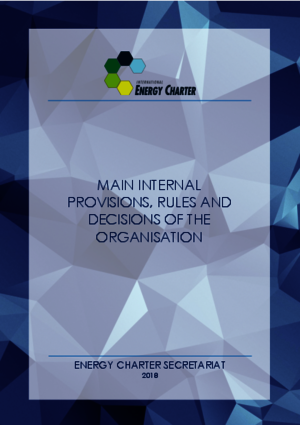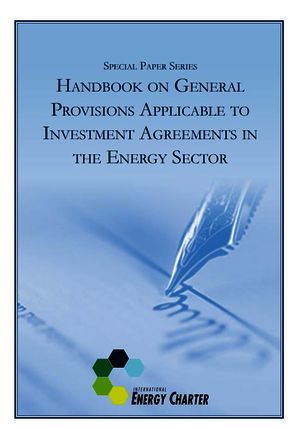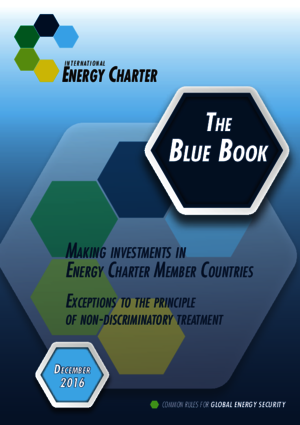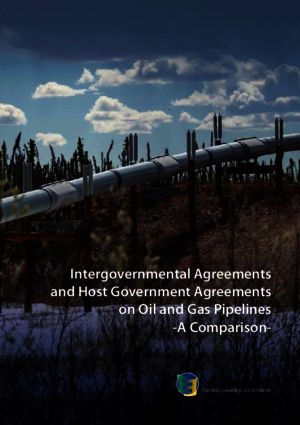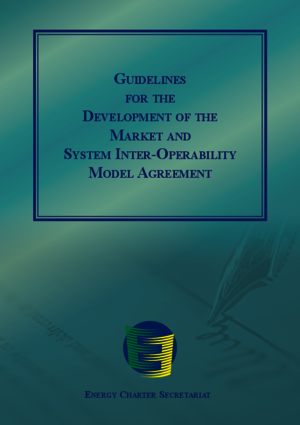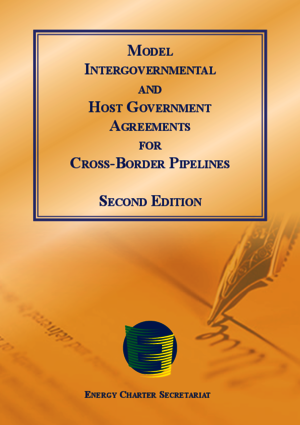Part (A) of the Annex W provides with “Exceptions to the Application of the Provisions of the WTO Agreement”. This part of the Annex W lists WTO provisions applicable to ECT using a by-reference approach in form of a negative list, i.e. a list referring to WTO provisions that are not applicable. In view of the fact that Annex W(A) does not show the WTO provisions actually applying, for transparency purposes, the Secretariat prepared Annex W, modified into a positive list of the applicable WTO provisions. |
This Handbook makes an attempt to offer guidance to governments on possible drafting and negotiation approaches that can be considered on a voluntary basis when preparing for entering into complex negotiations in the energy sector. The Handbook is divided into several chapters, most frequently encountered or otherwise dealt with in complex agreements in the energy sector. Energy projects differ in scope, have unique technical facets, and are subject to numerous legal requirements, including those arising from international law and relevant supra-national and national legal systems. |
 | This report is part of the activities carried out by the Energy Charter Secretariat in 2016-2017 aimed at preparing the groundwork on policy options for eliminating barriers to the establishment of energy investments. It contributes to these activities by answering the research questions: what are the international legal instruments available for removing barriers to the establishment of energy investments? What is the current practice of negotiating pre-investment obligations? What are the challenges in negotiating a new binding instrument in the energy sector and what lessons can be learnt from past experiences? What are the opportunities for negotiating a non-binding instrument? This report has been prepared by Ms. Maiko Meguro who was a research fellow at the Secretariat and a former deputy director of Economic Partnership Division, Ministry of Economy, Trade and Industry, Japan. She was an officer in charge of the investment and service chapters of the Trans-Pacific Partnership, the EU-Japan Economic Partnership Agreement (EPA), the Japan-Turkey EPA, and also other Bilateral Investment Treaties (BITs). She is currently on sabbatical from the Government of Japan, and based at University of Amsterdam. The report was prepared in cooperation with Mr. Matteo Barra who was a Senior Investment Expert at the Energy Charter Secretariat. |
The report ‘Intergovernmental Agreements and Host Government Agreements on Oil and Gas Pipelines: A Comparison’ was prepared by Ms. Barbara v. Gayling-Westphal as a legal intern at the Energy Charter Secretariat. The report also benefited from discussions held in 2014 and 2015 at the meetings of the Trade and Transit Group, as well as of the Legal Advisory Task Force. The aim of the report is to present a comprehensive overview of existing legal practices in cross-border pipeline projects in several parts of the world. To this end, the report first identifies 19 core topics of cross-border pipeline agreements. It then evaluates how these topics are incorporated in 17 different cross-border oil and gas pipeline projects as well in the Energy Charter Model Agreements on Cross-Border Pipelines and in the provisions of the draft Transit Protocol. Recommendations are made in view of a possible agreement on common principles or rules on transit and cross-border energy flows in the Energy Charter context. |
 | Article 26(3)(b)(ii) of the Energy Charter Treaty binds all Contracting Parties listed in Annex ID to provide, for transparency reasons, a written statement of their policies, practices and conditions which do not allow an investor to resubmit the same dispute to international arbitration at a later stage in accordance with Article 26(3)(b)(i).
|


